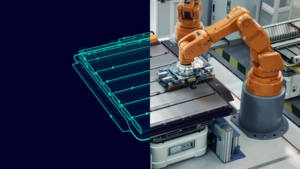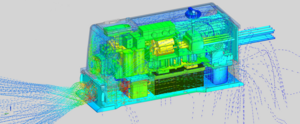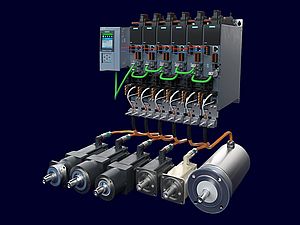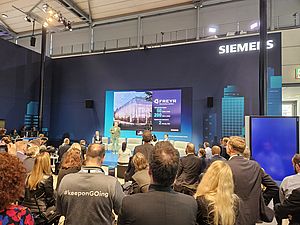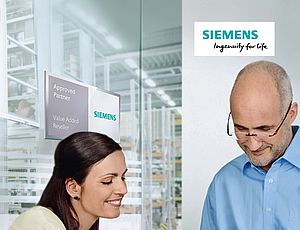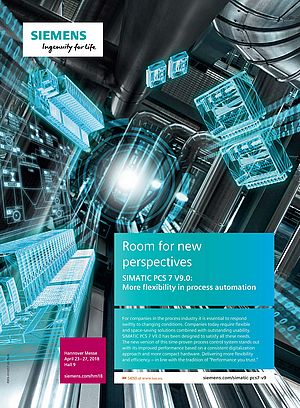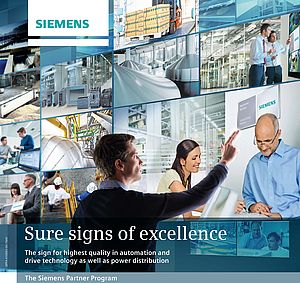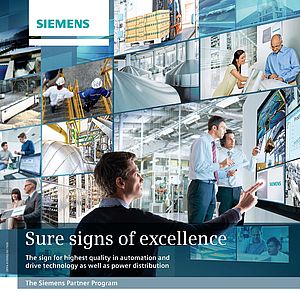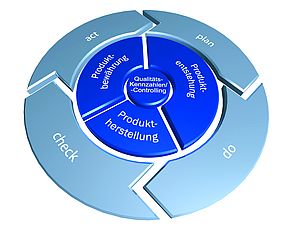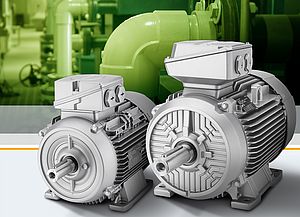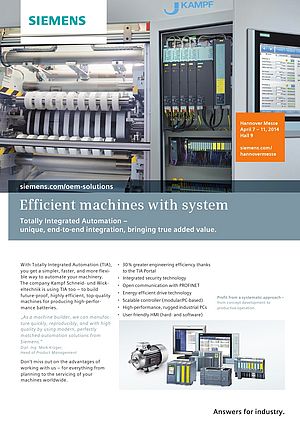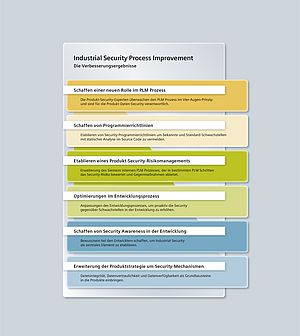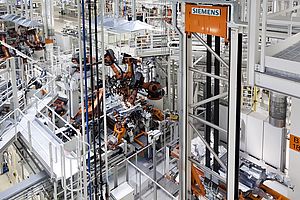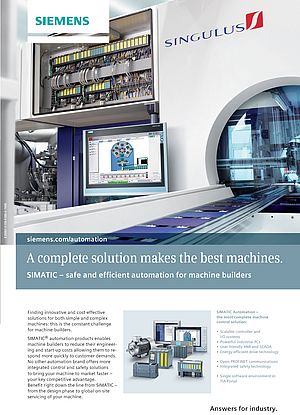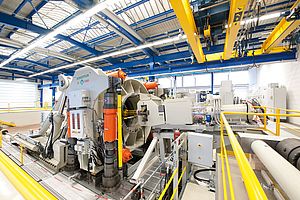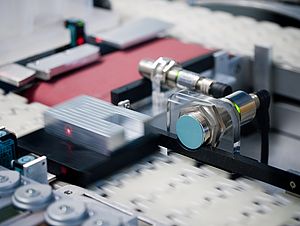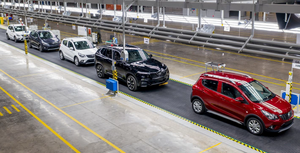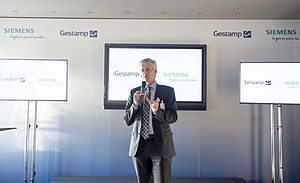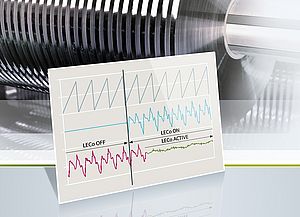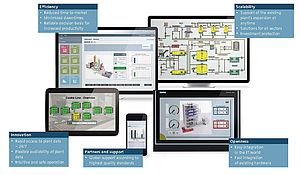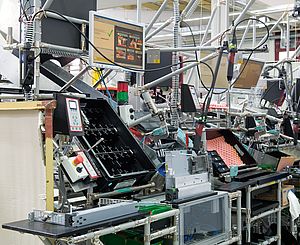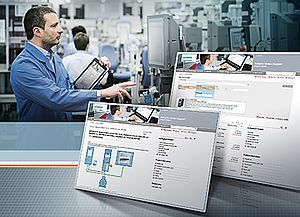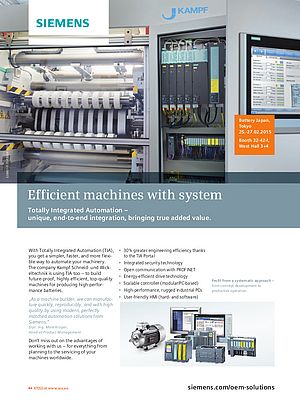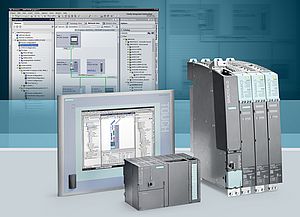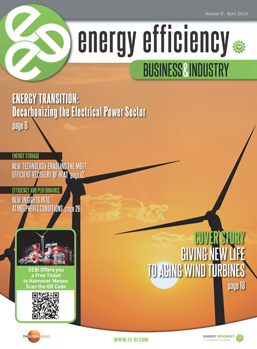Energy efficiency and the measures we can take to make buildings environmentally friendly are issues of growing importance in the USA. The more extreme the environmental conditions, the tougher the challenge, as the operators of a resort in the desert city Las Vegas know only too well. It is precisely situations of this type that demand sustainable solutions of the kind implemented by the MGM Bellagio: While the guests enjoy the pleasant cooling effects of the resort's automatic air conditioning plant, state-of-the-art drive technology developed by Siemens is working in the background to efficiently control the chillers, pumps, and fans of the chiller plant. By installing variable-speed drives as part of a modernization project, the resort has succeeded in cutting its annual energy costs by 25 percent and saving more than 400,000 US dollars over the last five years.
As President Obama recently announced, the USA is to double its energy efficiency by 2030. Measures designed to achieve this objective will include the building sector in addition to industry, transportation and infrastructure, because these account for around 40 percent of the country's energy consumption [1]. Five years ago, the American resort chain MGM Resorts International jumped at the chance to invest profitably in energy-efficient buildings – investments that are still paying off today.
One of the many projects that were conducted as part of this investment program was the modernization of the chillers in the "Bellagio Resort and Casino" in Las Vegas, a retrofit that Siemens helped to implement in 2008. This involved the installation of numerous variable-speed drives in the chiller plant to drive the chillers, pumps, and fans more efficiently and at the same time provide optimum automatic air conditioning to make guests feel even more comfortable.
In 2013, a good five years after completion of the project, John Leslie, Energy Manager at MGM takes stock: "When we made the decision back then to invest in an energy efficiency program, we were perfectly aware of the potential savings. But when I look at the trend in our energy usage over the last five years, I have to admit that our expectations have been surpassed. The return on investment was realized within 12 months. Compared to previous periods before, we achieved 25 to 30 percent reduction each year saving more than 420,000 US dollars in our chiller plant’s electric power consumption".
From inefficient continuous cooling to efficient, comfortable air conditioning
Before the retrofit project was implemented with Siemens, a total of ten compressors in the Bellagio Resort were producing 18,000 tons of cooling per month and monthly power costs were around 570,000 US dollars. Moreover, the chillers were operating continuously at full output, even when the temperatures inside the building did not require this.
By installing three medium-voltage Robicon Perfect Harmony drives on a total of ten of the air conditioning system's chillers, Siemens made it possible to flexibly adapt the output to the actual demand. This is because the variable-speed drives supply only as much power to the motor as is needed to meet actual requirements. When cooling demand drops, the converter responds by reducing its output. In addition, the Robicon Perfect Harmony drive comprises several low-voltage cells that are connected in series to form a medium-voltage system. Thanks to this topology, the converter can be precisely scaled to address a wide range of voltage and output power levels, a huge advantage when it comes to covering a broad spectrum of HVAC applications.
Maximum availability is indispensable
An issue of equal importance to be addressed by this project was the availability of the air conditioning system. This is because hotel operators need to know that hotel rooms will be cooled reliably, particularly if the resort happens to be located in a desert. Thanks to its modular structure and the fact that a defective cell can be bypassed during converter operation, the Robicon Perfect Harmony drive has an extremely high degree of availability.
A redundant bypass control, which is completely separate from the Power Cell, is capable of bypassing a defective cell automatically within 450 ms – in other words, in less than half a second. Instead of simply tripping the drive and therefore the process in response to a malfunction, the process-tolerant protection principle ProToPS provides a hierarchical system of warnings. This control strategy provides the time needed to evaluate the situation and respond appropriately to avoid a system shutdown.
The benefits offered by the versatility of the Robicon Perfect Harmony drive become particularly evident when it is employed in retrofit projects. Because it is compatible with existing motors – irrespective of their age, their make or their voltage and frequency requirements, it was possible to avoid the expense of replacing the Bellagio’s entire chiller plant. The retrofit components were also installed and commissioned quickly and cost-effectively.
Because unlike conventional converters, which consist of up to five different components, such as harmonic filters, power factor correction, transformer, converter and output filter, the topology of the Robicon Perfect Harmony drive requires only an input transformer and the converter. This integrated system not only speeds up, but also cuts installation and commissioning costs. While the modernization work was in progress, it was therefore possible to minimize process downtimes and provide greater flexibility in the management of the project overall.
Summary
If the subject of energy efficiency particularly in relation to building technology continues to be promoted in the USA within the framework of the current environmental policy, then MGM Resorts International will be regarded as one of the pioneers who recognized the potential of efficient drive technology. It is extreme conditions in particular, such as the operation of a resort in a desert city like Las Vegas, that demand sustainable, well-planned solutions. By modernizing their chiller plants with variable-speed drives from Siemens, the hotel operators not only succeeded in reducing their own energy usage and cutting their huge electricity bills, but they also boosted their guests' comfort by improving the control of the air conditioning system.
By Tom Shearer, Sales Manager West of Siemens Industry Inc, USA










